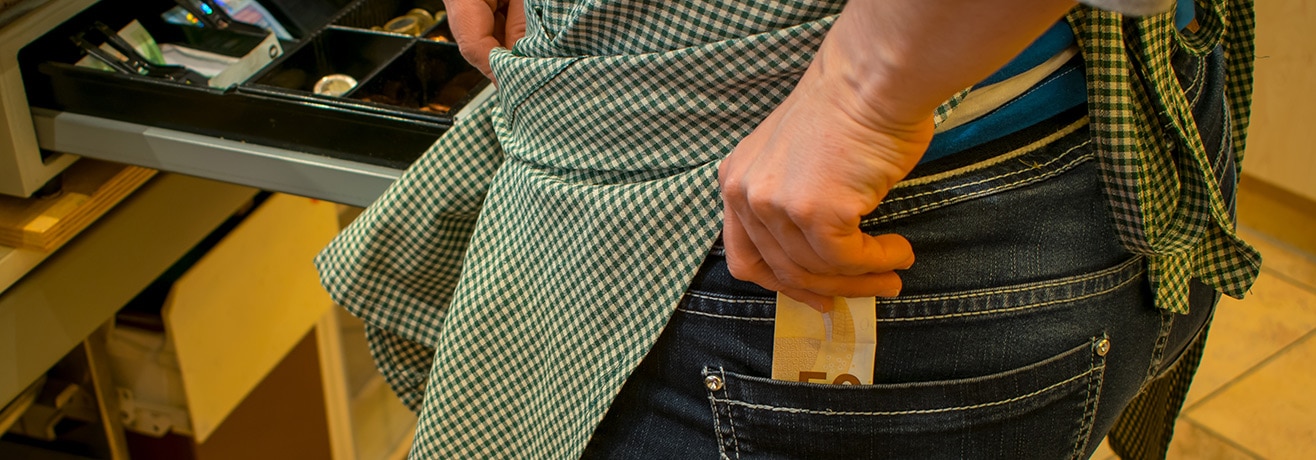Menu
Login
- SOLUTIONS
-
-
FRANCHISEES
-
FRANCHISORS
PARTNER VENDORS
-
-
-
- MARKETPLACE
- RESOURCES
- ABOUT
- SCHEDULE A DEMO
-

Loss prevention is an integral part of running a business. For restaurants, it can mean the difference between turning a profit and struggling to keep the lights on. It’s crucial for above store leaders (ASLs) to develop a plan and guard against loss.
To an extent, losses are inevitable. Reports that track waste, theft, and other loss sources are important. But you still need to watch other metrics that will help you take corrective measures. Read on for tips making loss prevention metrics work for you.
An environment with good team morale is unlikely to have fraud. When things are going well, it’s invigorating. Conversely, if mistakes, waste, or bad scheduling are creating problems for your staff, it’s not unusual for team members to feel that they deserve more than just their salary. If you see a sudden slowdown, trouble may be brewing.
The above store leader should have parameters about what gets reported. “No surprises,” should be the name of the game. Ideally, you should know about Tuesday’s cash loss on Tuesday – not on Wednesday. As a double-check, whoever opens the restaurant should be able to look at reports from the previous day and take note of any anomalies.
Some key areas to watch are:
There’s no such thing as too much communication. If the manager in charge is communicating about something as it happens, or the next day when they find it, they’re saving themselves from a phone call or an email when the next person up the chain catches it. If it’s something significant, it’s easier to deal with when memories are fresh.
For restaurants that have a drive-thru timer, check daily to make sure the timer matches the POS system. Each car that goes through your line should have an associated order. If it doesn’t, that shows you may have a problem. Delaget Guard will let you know if there are gaps in your orders.
In a fraud situation, the first sign that something is wrong is that there are missing receipts. Refunds and discounts should always be documented with a receipt.
Train your production staff to notice when an order changes after it reaches the ordering system. Most systems are designed to flash or beep when there is a change. Keeping an eye on this will uncover irregularities.
It’s crucial to make sure that each cash register is only used by one cashier at a time. That means that only one person should work any given register, and the register should be assigned to their name. That creates accountability for the process and cash.
Every employee should count the drawer at least two times during every shift: Once before taking the register, and again when they’re ready for handoff.
Use the tools that are available to write an accurate sales forecast, which should take into account sales history, local calendars, holiday calendars, and the weather. Keep an eye on last year, not on last week, as higher-volume weeks from the holiday season, for example, could skew your forecasting system’s results for up to two months.
Too much help is a waste of labor, not enough labor impacts employee morale. Write your schedule to meet the needs of the business, while also meeting the needs of the employees.
There are many types of loss and many ways you can detect it. Here are some tips to reduce and prevent loss:
Store loss affects everyone, whether they realize it or not. Don’t make loss prevention an afterthought. Use your tools to detect common types of loss, and take action to reduce and prevent it in your stores.
Delaget is the number one resource for QSR data aggregation and understanding. Smarter Wins.
PAR OPS' blog on operational strategies to grow your business faster.
Everything You Need to Know About Hiring & Retaining Teenagers During the 2021 Labor Crisis
Nickels and Dimes: 4 QSR Operational Money-Savers You Likely Haven’t Tried Yet
QSR Loss Prevention: 4 Ways to Prevent and React to Employee Theft